In soccer, injury prevention is a top priority for both athletes and coaches. With packed schedules, high-impact gameplay, and repetitive strain, soccer players have to struggle constantly to keep fit and not sustain injuries that can ruin their careers.
For athletes nowadays, red light therapy appears to be the new trend in sports medicine. This non-invasive treatment provides low-level wavelengths of light as healing. But does it really provide benefits for soccer players in terms of injury prevention? Let us find out.

Understanding Soccer Injury Risks
Common Lower Body Injuries and Statistics
Football is an extremely physically demanding sport that takes a toll on the lower body. Players sustain injuries like:
- Sprained ankles can be caused by sudden changes in direction or improper landings.
- Knee pain is often attributed to injured ACLs, meniscal tears, and patellar tendonitis
- Strains on hamstrings are primarily associated with sprinting and overstretching of the leg.
- Groin pulls caused by repetitive kicking and abrupt lateral movement.
A study in the International Journal of Sports Medicine reveals that up to 70 percent of all injuries in soccer include lower extremity injuries. It shows very common data that can be the cause of injury prevention strategies. This high rate demonstrates the need for precautionary measures to prevent injury.
The Impact of Overuse and Schedule Overload
Soccer players often suffer from packed timetables, hard training regimes, and short recuperation spans. Overusing injuries like shin splints and stress fractures frequently occur when fixtures are too many. Schedule overload is not only an aggravation of actual existing physical overload, but it also escalates the risk of acute injuries resulting from fatigue-induced errors. Therefore, coming up with effective recovery strategies is highly crucial in terms of sustainable performance as well as the prevention of injuries.
The Science Behind Red Light Therapy
How does Light Therapy Affect Muscle and Joint Recovery?
Red light therapy means direct exposure of the human body to low-level red or near-infrared wavelengths. They go deep into skin and tissues, prompting cellular repair and regeneration. Primary body responses are:
- Enhanced ATP production: Red light triggers cells’ energy production organelles, called mitochondria, to generate more energy for the human body. The result is an enhanced cell healing and revitalization process.
- Reduced inflammation: Light at the red end of the spectrum has been shown in increasing studies to control swelling and reduce pain through modulation of certain cytokines or markers associated with inflammation.
- Improved circulation: The therapy’s mode of action includes relaxing blood vessels so more oxygen is transported along with nutrients into damaged tissues.
These advantages highlight why RLT is considered an essential tool in dealing with muscle and joint strains common among soccer players.

Clinical Evidence in Sports Medicine
Another trial, based on chronic pain management, showed significant improvement in pain intensity and joint function in trial participants receiving red light treatment. According to the findings, it has been revealed that RLT could help in treating injuries in soccer players and prevent them through optimal tissue health.
Targeted Treatment Areas for Soccer Players
Lower Extremity Applications (Ankle, Knee, Hip)
The ankles, knees, and hips can be subjected to a lot of strain due to the dynamic movements in football.
- Ankle: Targeting the ankle reduces swelling, and sprains and assists in ligament healing through red light therapy.
- Knee: RLT can improve joint stability and reduce inflammation. It’s a therapy that helps manage chronic knee pains and recovering from an ACL sprain.
- Hip: Soccer players often experience hip flexor strains and overuse injuries. The area can be kept flexible, and stiffness can be minimized with the RLT regenerative effect.
Managing Chronic Conditions and Pain
Chronic conditions such as tendinopathy or arthritis are suffered by soccer players more frequently as they near the end of their sporting careers. The treatment with red light may help athletes effortlessly overcome the trouble and stay active longer. Through the process of increasing blood flow while decreasing inflammation, persistent pain may be reduced and long mobility facilitated.
Long-term Benefits and Prevention
Reducing Career-Impacting Injuries
Injuries such as anterior cruciate ligament tear, as well as recurrent muscle strains, are potential hazards in the career of a soccer player. Red light therapy acts on the preventive grounds by:
- Providing strength to the tissues thus preventing any chances for any tears.
- Improves the speed of the recovery process, thereby reducing the chances of reinjuries.
- Supports entire joint health, which is a requirement while undergoing the rigors of soccer practice.
So, if a player integrates RLT into their routine, they are likely to play for longer and have better resilience.
Supporting Physical and Mental Recovery
While physical recovery is the most common therapeutic function of red light therapy, it has potential benefits for mental health as well. Chronic pain and prolonged injury can contribute to poor mental health for many athletes. Research shows that RLT can also improve symptoms of depression or anxiety by enhancing cellular energy production in the brain. This makes it a complete tool for taking care of athletes, both in and outside of sport.
Conclusion
Preventing injuries in soccer is quite difficult and involves training, recovery from injury, and medical intervention. Red light therapy is one of the possible strategies to prevent injuries among footballers due to its scientific backing. Thus, for athletes to perform at their peak levels without any injury issues, they should consider using this non-invasive form of therapy for various purposes ranging from enhancing tissue repair through reducing inflammation to promoting mental health.
However, there is a need to conduct more studies in order to optimize protocols for sports-related treatments. Nevertheless, this form of treatment represents some progress toward ensuring a healthier and better injury-free career among soccer players worldwide.
References
- Glass GE. Photobiomodulation: The Clinical Applications of Low-Level Light Therapy. Aesthet Surg J. 2021 May 18;41(6):723-738. doi: 10.1093/asj/sjab025. Erratum in: Aesthet Surg J. 2022 Apr 12;42(5):566. https://pubmed.ncbi.nlm.nih.gov/33471046/
- Borges LS, Cerqueira MS, dos Santos Rocha JA, Conrado LA, Machado M, Pereira R, Pinto Neto O. Light-emitting diode phototherapy improves muscle recovery after a damaging exercise. Lasers Med Sci. 2014 May;29(3):1139-44. https://www.researchgate.net/publication/258824138_Light-emitting_diode_phototherapy_improves_muscle_recovery_after_a_damaging_exercise



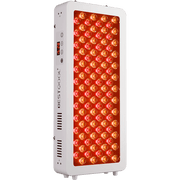









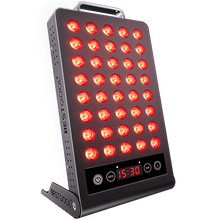
 Small
Small
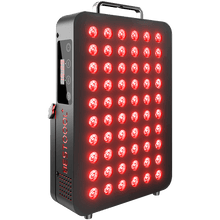
 Moderate
Moderate
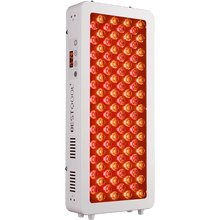
 Moderate
Moderate
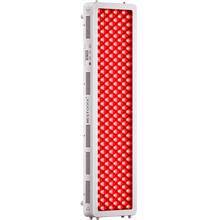
 Moderate
Moderate
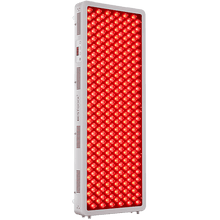
 Full
Full



